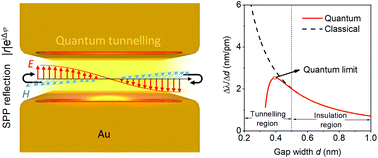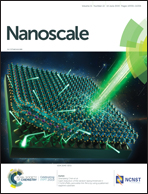Analytical analysis of spectral sensitivity of plasmon resonances in a nanocavity†
Abstract
Metallic nanocavities exhibit extremely high spectral sensitivity to geometrical variations and are promising for sensing applications. Here, the sensitivity of a cubic dimer cavity, to picometer gap variation, is analysed in a model, which takes into account the phase shift of scattering at the boundaries and the quantum tunnelling effect in the small gap limit. The resonance wavelengths are expressed in terms of the plasmon frequency, the medium dielectric function, and the geometry of the gap. The sensitivity of the resonance wavelength to the gap width variation is found to be as high as 1 nm pm−1. While the resonance wavelengths depend on the materials’ dielectric functions, the sensitivity is found to scale universally as a function of gap distance. In the sub-nanometer regime, electron tunnelling across the gap starts to suppress the plasmonic field, setting the limit of sensitivity of such a dimer cavity. The results given by the analytical model are complemented by numerical simulations using Comsol. Our model reveals the origin and universal behaviours of the sensitivity of the cavity plasmon and provides guidance for the design of new sensitive rulers at the picometer scale.



 Please wait while we load your content...
Please wait while we load your content...